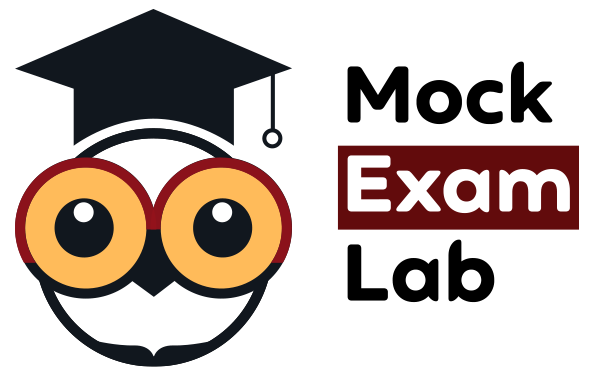
If you need to take a test to prove that you are proficient in the English language, the TOEFL and IELTS are two of the most well-liked options. Should you take the TOEFL or IELTS, though? How is each test structured? Do schools favor a particular exam above others? Which one will you score better on?
For a detailed comparison between TOEFL and IELTS, as well as the solutions to all your questions, read this article!
We must discuss each test before responding to the IELTS vs. TOEFL question.
The ETS, which also creates the GRE (a test for graduate school admissions) and several other exams, produces the TOEFL (Examination of English as a Foreign Language), an English language competency test.
The TOEFL comes in a variety of paper-based and computer-based formats. The TOEFL iBT, which is given online, will be the main emphasis of this tutorial. By far, the most popular and widely acknowledged version of the TOEFL is the iBT.
Toefl Format
Four components make up the 3.5 hours that make up the TOEFL. A ten-minute break separates the Listening and Speaking parts. You will be given a score between 0 and 30 for each section. When these values are combined, your overall TOEFL score ranges from 0-120.
THE EFL Content
The TOEFL consists of four portions, each assessing a different aspect of your English language proficiency. A brief description of what to expect in each section is provided below.
iBT Reading
Students will read three or four passages from academic literature for Reading and respond to questions about them. The texts are from college textbooks that introduce a subject or field. There are three different kinds of questions: traditional multiple-choice questions requiring students to place sentences in the appropriate places within paragraphs and questions requiring them to arrange the material into a chart or summary table correctly.
ESL listening test
A set of questions follows each of the four to six audio in the listening portion. The interactions captured on the recordings are comparable to those students have with teachers and other students in the classroom, such as during lectures or discussions between students. Multiple-choice questions will ask you to organize steps in an event or process, and questions that ask you to match text or objects to categories in a chart.
iBT Speaking
The first two assignments require autonomous Speaking, and the student’s responses are based on their thoughts, judgments, and experiences.
The final four tasks all involve collaboration. When responding to questions of this nature, students must employ many skills.
Students have to read, listen, and talk to complete two integrated activities. They must first listen before speaking in the other two activities.
iBT Writing
Integrated Writing and Independent Writing are the two assignments in the Writing division. Students hear a brief recording and read a short piece as part of integrated writing. After that, they’ll have 20 minutes to compare and synthesize the data they gathered from these two sources. An answer should be between 150 and 225 words long.
Who accepts TOEFL results?
Around the world, more than 9000 universities accept TOEFL results. Most institutions questioned for the United States said they favored TOEFL scores above results from other English-language examinations. To find out which institutions get TOEFL scores, utilize the TOEFL Destination Search.
We’ll discuss the IELTS test’s format next in comparing the TOEFL and IELTS.

Overview of the IELTS
The IELTS is available in two versions: Academic and General Training. IELTS Academic is for those wishing to pursue a career or further education. IELTS General Training is a must for those going to English-speaking nations for secondary school, job experience, or work experience. Since IELTS Academic is the version required for applicants to university and graduate programs, it will receive the most attention in this tutorial.
Format for IELTS
The IELTS exam takes 2 hours and 45 minutes in total. The TOEFL and IELTS both include four portions. However, the two test each section in a different order. On the IELTS, you will obtain a score between 0 and 9 for each part. The average of these four sections gives you a final score that goes from 0 to 9.
Unlike the TOEFL, which must be taken all at once, the IELTS allows you to take the Speaking test up to a week before or after the other sections if you’d like. You schedule your Speaking time when you register for the exam).
IELTS Subjects
The four IELTS components are covered in more detail below.
Listening IELTS
You must respond to 10 questions after each recording. Multiple choice, matching, diagram labeling, phrase completion, and short answer are a few questions.
There are three passages for Reading, each followed by ten to fifteen questions. The quotations are from periodicals, books, magazines, and newspapers. They could use narrative, descriptive, or even persuasive writing as their style. There will be at least one with a thorough justification.
The question types for the Reading part will be similar to those for the Listening section and include multiple choice, matching, diagram labeling, sentence completion, and short answer.
Writing IELTS
Two writing tasks are present. Students must use their own words to describe a visual item of information (such as a graph, table, chart, or diagram) for Task 1. They must compose an essay of at least 150 words. It is advised that students work on this assignment for 20 minutes.
Students are given a topic for Task 2, which is frequently one side of a debate or discussion. They must produce at least 250 words of academic writing. It is advised that they devote 40 minutes to answering this question. Students are evaluated on how well they react to the question, the organization of their writing, and the variety of their vocabulary, spelling, and grammar for both assignments.
Speaking in IELTS
You’ll have an oral interview with an examiner for IELTS Speaking. The examiner will note your comments. There are three parts to this section.
Part 1: The interviewer will pose common inquiries to the student on their jobs, families, studies, and interests.
Part 2: The interviewer will give the student a card with a subject to cover. The interviewer gives the student one minute to prepare before asking two minutes of questions, which the student must then respond to.
Part 3: For four to five minutes, the student and interviewer will continue to detail the subject covered in Part 2.
Who Accepts IELTS Scores
IELTS results are accepted by more than 9,000 universities worldwide, just as the TOEFL. The IELTS is more popular abroad, such as in the United Kingdom and Australia, and is taken less frequently than the TOEFL for students wishing to enroll in graduate programs in the United States. However, many American schools still accept TOEFL results.
